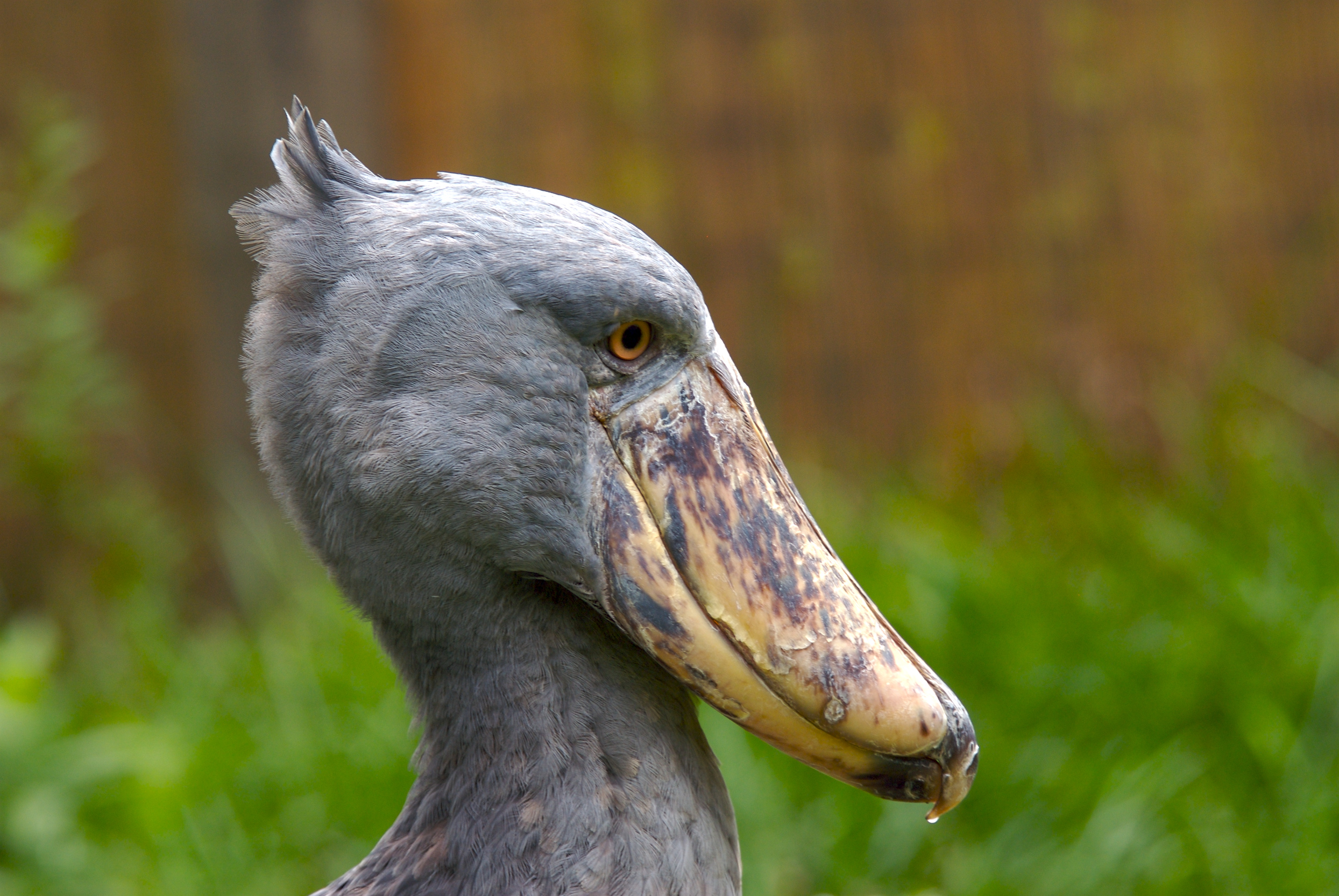
Reproduction: During the mating season, which lasts from April to June, male and female shoebill storks build 1-1.7-meter-wide nests out of aquatic vegetation on floating platforms. Life Span: The shoebill stork is known to be a solitary bird and can live for 35 years in the wild, and up to a stunning 50 years or more in captivity. The shoebill stork is known as a statue bird because it is frequently seen standing and remaining still in one location for extended periods.įlying distance: Due to their flapping rate of about 150 flaps per minute and their nature, shoebills are slow and their flying distance ranges between 100-500 meters. The shoebill stork’s tail measures 100-140cm in length, and its wingspan is 230-260cm. Length: The shoebill stork is about 110cm-140cm tall when standing on its legs and has a long foot that extends up to 18cm, allowing it to stand on aquatic vegetation. Weight: A mature female shoebill stork weighs approximately 4.9 kilograms, whereas a male shoebill weighs approximately 5.6 kilograms. Mouth: The shoebill stork has a shoe-like shaped mouth, hence the name shoebill, and a sharp bent beak that allows it to tear mammals into reasonable sizes for easy digestion.

The St.When flying, the shoe bill stork’s legs extend straight back past the tail and its neck draws back. In addition to the many species of water-breathing aquatic animals, our Oceans collection also includes air-breathing marine mammals. Oceans – The Oceans allow guests to get up close with a diverse collection of animals of unusual shapes and brilliant colors.Whether interacting with tigers, bears, or any other creatures of the trees, you are sure to feel transported away from the cityscape while in our Forests area. Forests occupy about one third of the Earth’s land area and contain nearly 70 percent of the carbon present in living things. Along with various flora and fauna, forests are also characterized by diverse animal species that call it their home. Forests – Temperate and tropical forests across the world are represented in our Forests exhibits.However, the flamingos and the southern ground hornbills will be on exhibit in the winter as weather permits. These beautiful birds in this exhibit come from warmer climates, like Africa, South America, Asia and Australia, and for their comfort, many of the species spend the winter months inside their climate-controlled off-exhibit area. Flights of Fancy – Experience an extravaganza of showy feathers, explosive color and amusing antics when you visit Flights of Fancy: A Brilliance of Birds.The temperature-controlled climate remains 85 degrees in the summer and 82 degrees in the winter, providing a warm environment where our species can thrive. Deserts – When the doors open to the Deserts Dome, visitors arrive in an arid oasis surrounded by beautiful and mysterious creatures - some of the friendlier ones are even free-roaming! Sunlight fills the space and guests can often see lizards high overhead sunning themselves on rocks close to the windows.

The large exhibit spaces have been designed to provide guests - and animals - with multiple areas where they can watch these beautiful creatures.123 When you walk into the large savannah, surrounded by tall grasses and trees on all sides, you’ll feel like you’re on safari in the bush as you watch a variety of African animals graze. Plains – A slice of Africa is recreated in Indianapolis in the expansive Plains exhibit.It brings new hope to a species on the verge of extinction. It serves as a vital education, research and conservation center aimed at ensuring a positive future for critically endangered orangutans in the wild. Simon Skjodt International Orangutan Center – Discover for yourself why this award-winning facility has been called one of the most significant zoo exhibits anywhere in the world! Designed to stimulate the apes’ physical, social and intellectual abilities, the Simon Skjodt International Orangutan Center is home to one of the largest groups of orangutans in any American zoo.


 0 kommentar(er)
0 kommentar(er)
